The Umbrian hills offer a charming city to explore. With its rich history, beautiful architecture, and stunning panorama, it’s a great day trip destination.
One of the main attractions is the Duomo di Spoleto, built in the 12th century. The cathedral’s tower also offers panoramic views of the city. For art lovers, a visit to the Galleria Civica d’Arte Moderna is a must. The gallery showcases a diverse collection of contemporary works by Italian artists.
Spoleto is also known for its annual Festival dei Due Mondi, or Festival of the Two Worlds. A walk through the Monteluco Nature Reserve offers breathtaking views of the city and surrounding valleys. Choose one of the traditional restaurants and pair your meal with a glass of local wine.

Location
Spoleto located in the southeast of Umbria. City is situated on the eastern branch of the ancient roman Via Flaminia which leads off to Nursia (Norcia).
Association Rocca Albornoziana
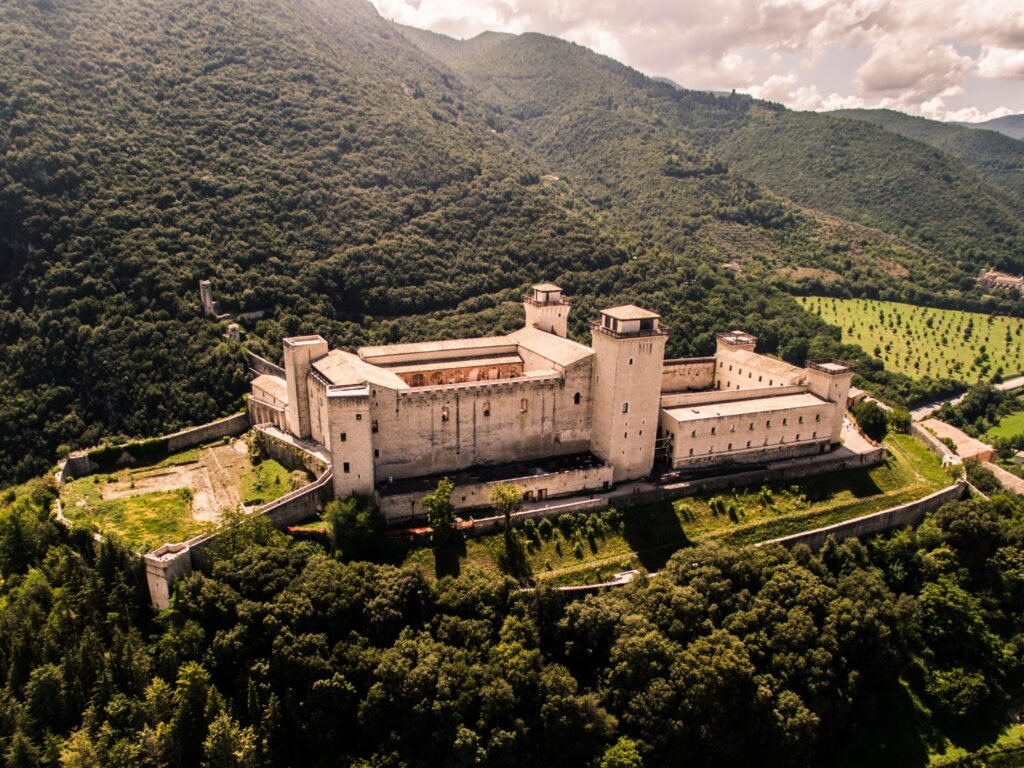
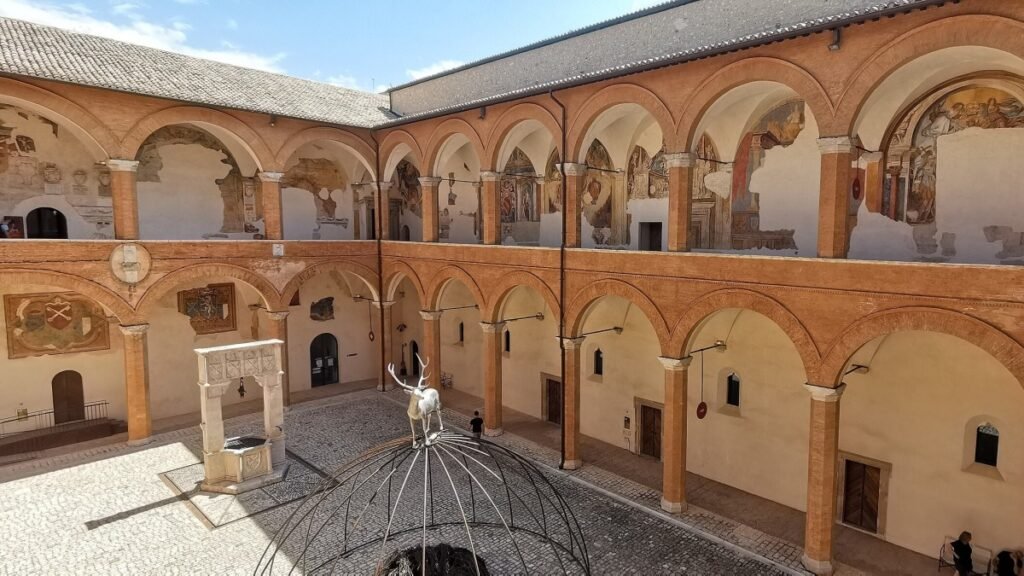
Rocca Albornoziana in Spoleto, with its breathtaking views of the city and surrounding hills, and its impressive Roman bridge, is an ideal place for wandering, sightseeing, and, of course, taking photos.
Inside the fortress, you’ll find many captivating spaces, including the Cortile d’Onore, the Cortile delle Armi, the Salone d’Onore, and the Camera Pinta. Each of these areas is decorated with exquisite frescoes, paintings, and works of art of historical significance. The Fountain of San Patrizio in the courtyard offers a unique echo effect.
Cathedral of the Assumption of the Blessed Virgin Mary in Spoleto
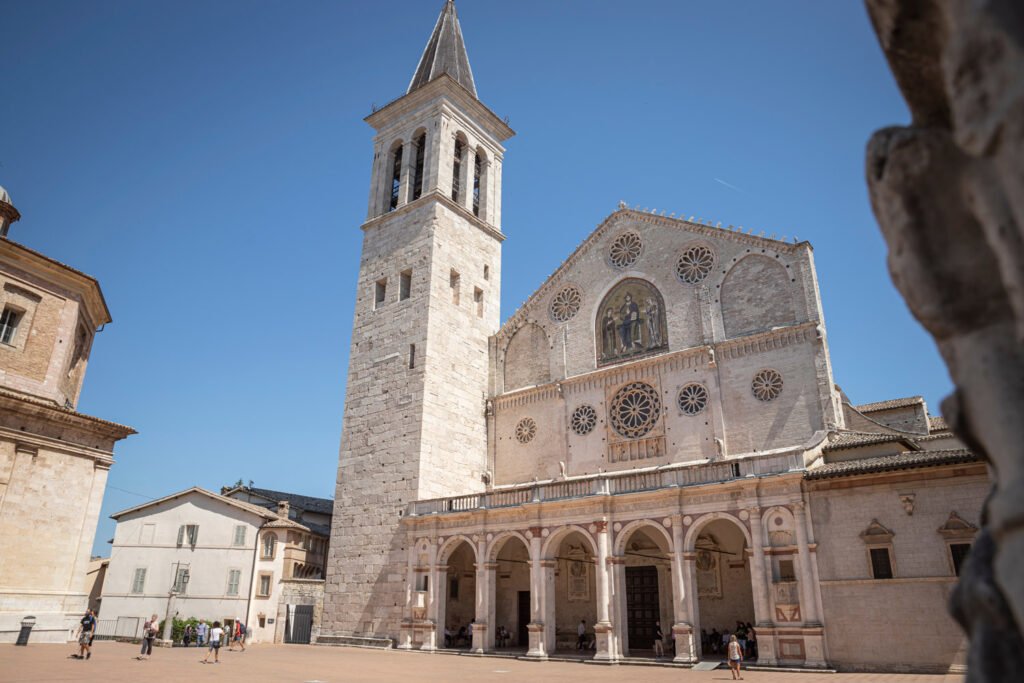

Spoleto Cathedral (Cathedral of the Assumption of the Blessed Virgin Mary) is located in Piazza del Duomo and dates from the 12th century. It features a beautiful Romanesque façade decorated with eight rosettes, a large Byzantine mosaic, and bronze doors. Inside, the central apse contains frescoes depicting the life of the Virgin Mary. The beautiful architecture and the Mass services attract tourists.
Ponte delle torri


The Ponte delle Torri is an arched bridge, derived from the Roman aqueduct of Spoleto. This impressive limestone structure, approximately 230 meters long and 80 meters high, connects the hill of Sant’Elia with Monteluco. Its current appearance dates from the mid-14th century. The bridge had a dual purpose: to connect the fortress (colle Sant’Elia) with the Fortilizio dei Mulini (the fortress of Monteluco), and to bring water from the Cortaccione springs to the city.
Ciclabile Ex Ferrovia Spoleto – Norcia


This ancient railway has been transformed into a pedestrian and cycle path, built on the original route where it was first used in 1926 from Spoleto to Norcia. It passes through 19 tunnels (the longest reaching 2 km in length) and over 24 bridges of great engineering and architectural significance. The route’s gradient does not exceed 4.5%, making it suitable for all walkers and cyclists on their first adventures.
Palazzo Collicola


Palazzo Collicola, one of Spoleto’s most important noble buildings. The Noble Apartment at the first floor is a remarkable sample of 18th-century noble residence, maintaining most of its original splendor.
The Modern Art Gallery Giovanni Carandente is at the second floor, it gathers paintings and sculptures by the most important, 20th-century Italian and international artists. Organized in 18 halls The Biblioteca Giovanni Carandente, located at the Piano Nobile of Palazzo Collicola Visual Arts, is a collection of more than 30,000 volumes.
Villa Pianciani
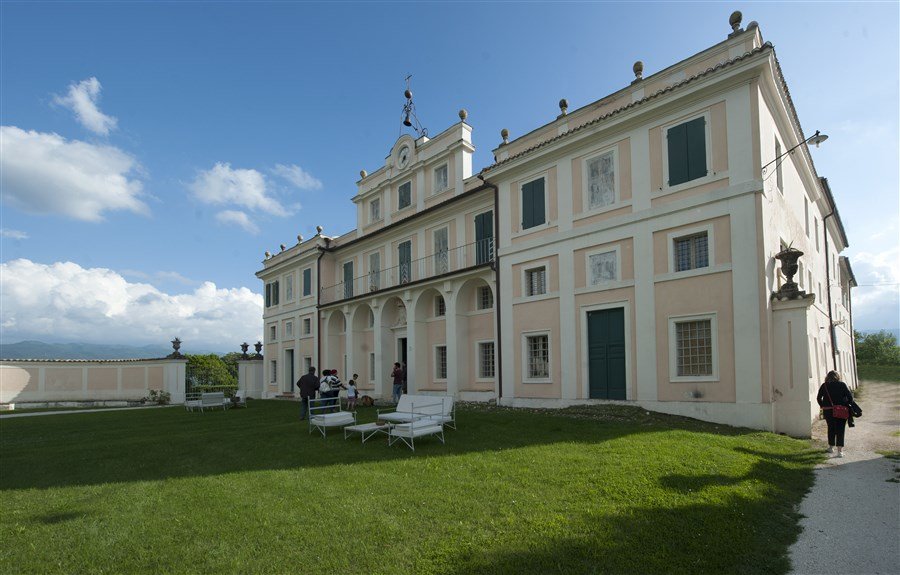
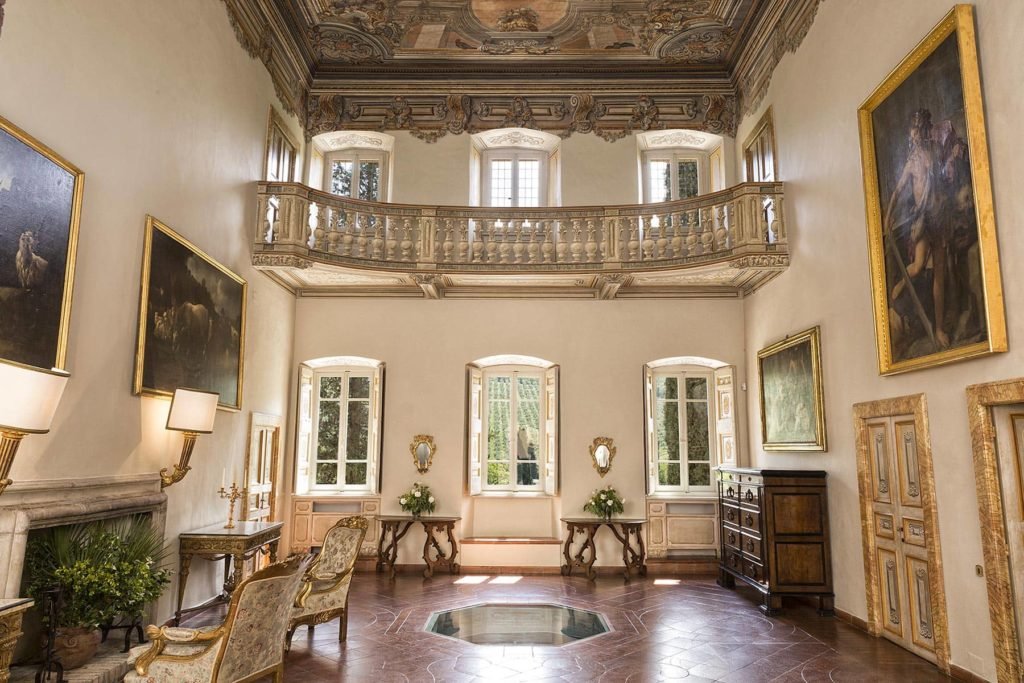
Villa Pianciani is a historic 18th-century estate, a gem of Italian architecture. Nestled on the hills near Spoleto, the villa is surrounded by lush gardens and olive trees. Villa Pianciani is frequently used for weddings and cultural events, offering a peaceful setting and picturesque views of the surrounding countryside.
San Pietro extra moenia
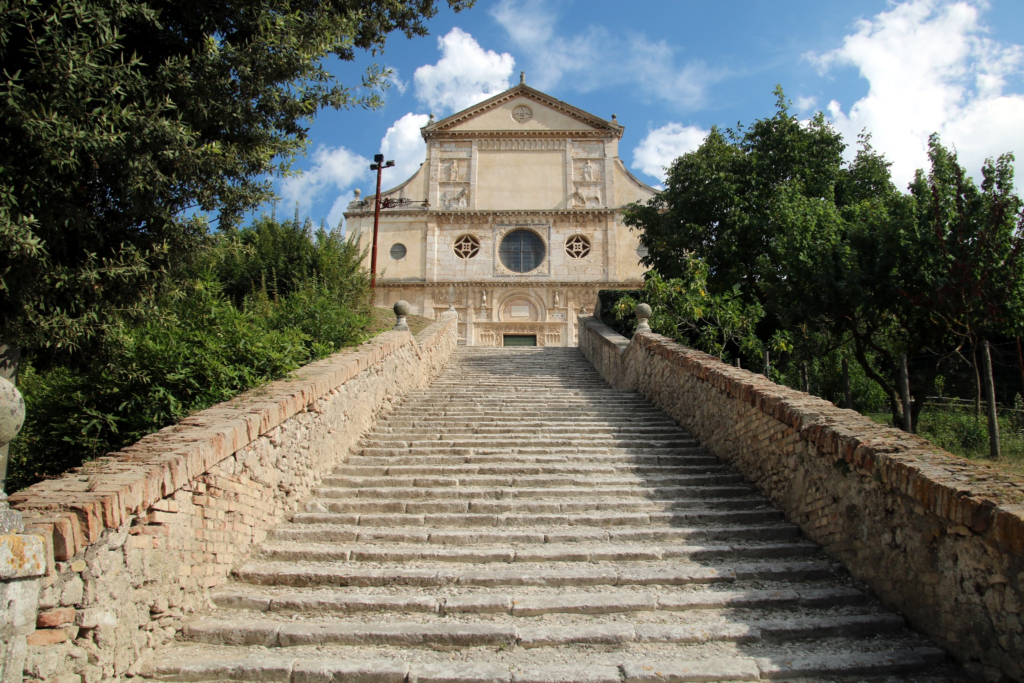

St. Peter’s Church “Outside the Walls.” Founded in 419 and rebuilt in the 12th-15th centuries. This Romanesque church, the burial place of many bishops, stands at the southern entrance to Spoleto, outside the walls, overlooking the fortress and bridge. A wide and majestic staircase, built in 1600, leads up to the church.
Basilica of Sant’Eufemia
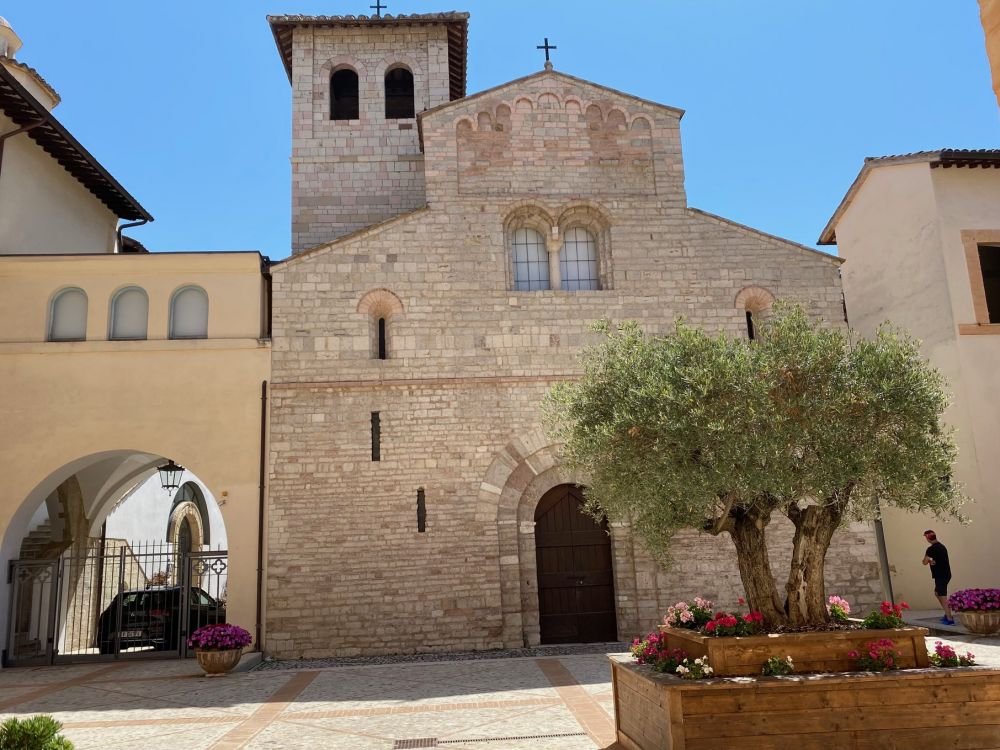

The Basilica of Sant’Eufemia dates back to the 16th century. This Romanesque church is located in Piazza del Patriarcato, in Grado’s old town. This ancient church, built in 579 AD, holds great historical significance as the former cathedral of the patriarchate of Aquileia.
The basilica consists of three naves divided by marble columns, with a mosaic floor featuring geometric and symbolic patterns. Inside, the basilica contains a hexagonal pulpit from the 13th century, decorated with detailed carvings and Gothic frescoes depicting Christ enthroned.
Santa Maria della Manna d’Oro
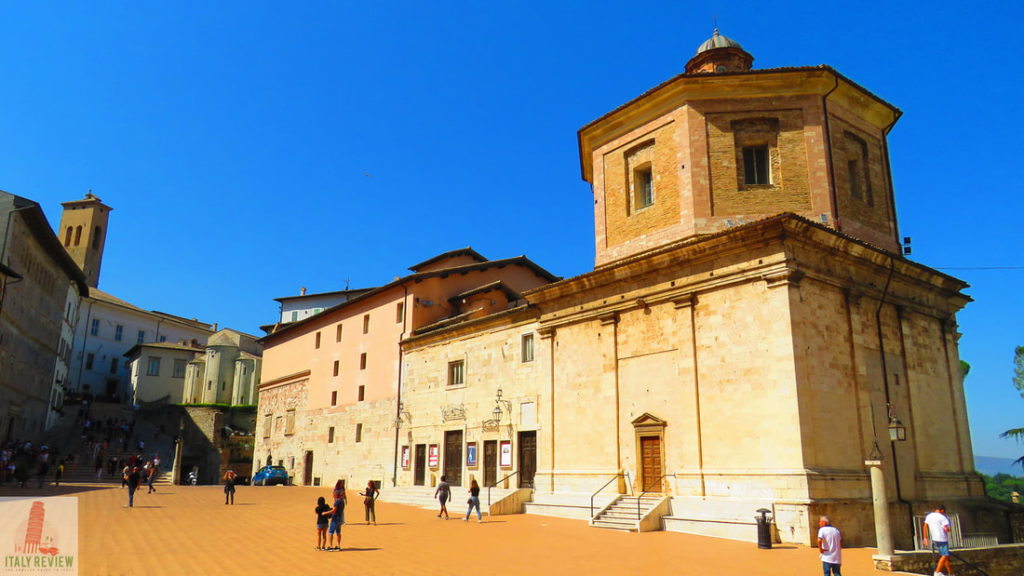

The former church of Santa Maria della Manna d’Oro is located in Piazza del Duomo in Spoleto, next to the Caio Melisso Theatre. It was built between the 16th and 17th centuries. Its current appearance is the result of work completed in 1681, the date of which is carved into the marble above the entrance.
The church’s interior now serves as an exhibition space. It houses a magnificent baptismal font, originally part of the cathedral, as well as several paintings by Sebastiano Conca.
Museo della ferrovia Spoleto Norcia
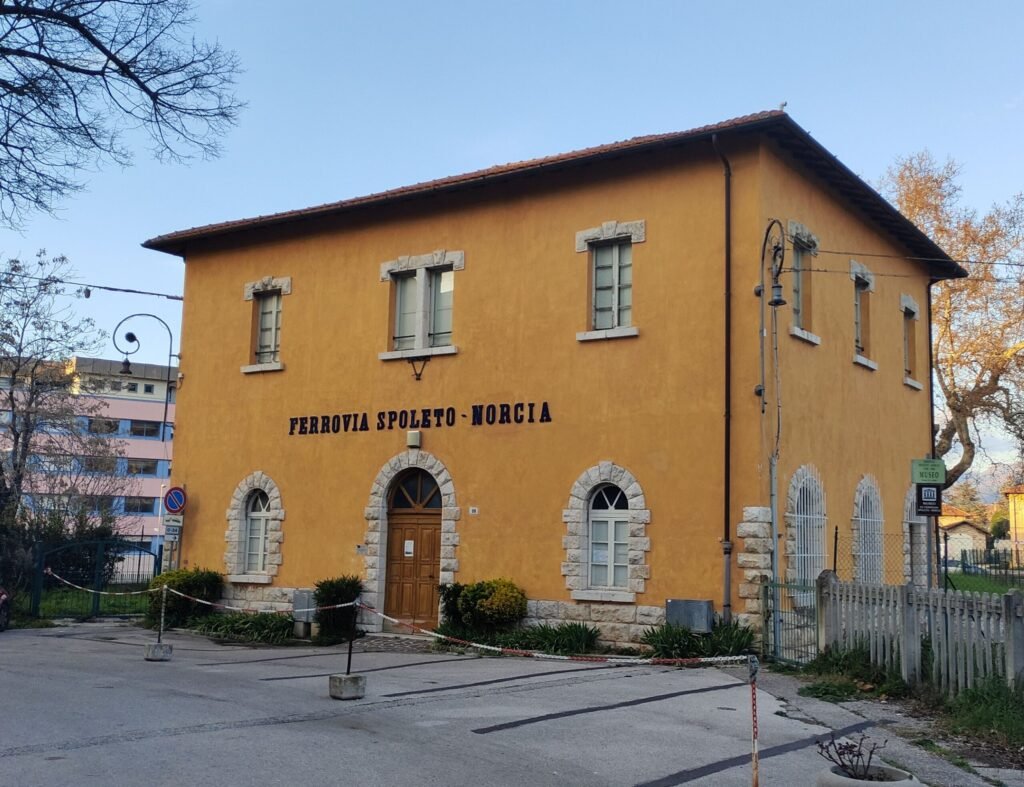
The former station complex consists of the first building, which housed the ticket office and offices, followed by a small building with a canopy that allowed passengers to board the trains. Further on, there is a residence for railway employees and finally a warehouse. It displays documents, system components, objects, and photographs of this decommissioned railway. However, the marvelous route and the wonderful tunnels remain, which can now be explored as a trekking rail.
The material is owned by Umbria Mobilità and the private collection of Luigi Fasciglione, son of a stationmaster who worked on the Spoleto/Norcia line. It is open on Saturday afternoons from 4:30 to 7:00 pm and on Sundays from 10:30 am to 12:30 pm and from 4:30 to 7:00 pm.
Museo del Tessile e del Costume
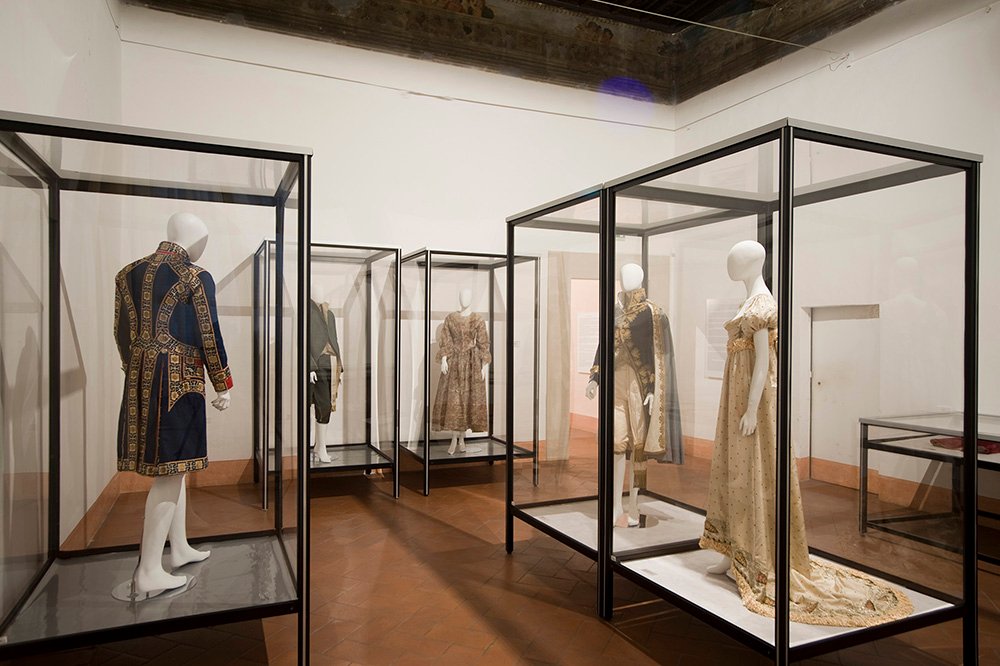
The museum is located on the ground floor of Palazzo Rosari Spada. The collection includes numerous artifacts from various collections. The exhibition is divided into five rooms, each dedicated to a different thematic section (liturgical vestments, costumes, costume accessories, patterned fabrics, Umbrian fabrics), offering insights into the history of textiles and costumes from the 14th to the 20th century.
San Ponziano


Acient Monastery of San Ponziano is a 12th-century monastic church dedicated to the patron saint of the city. It has a lovely Romanesque facade and extensive medieval frescoes in the crypt. Building delves into the past, taking visitors on an exciting journey through centuries of devotion and art.
